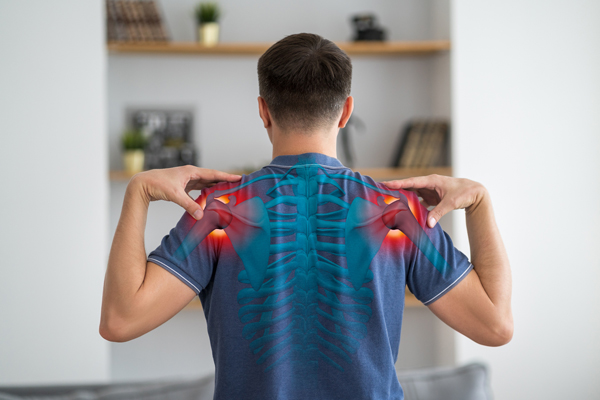
Our shoulders are one of the most versatile and complex joints in our body, allowing us to lift, throw, and reach for objects. This extraordinary range of mobility leaves this joint prone to injuries. This is especially true for teens and active adults who are physically active.
Watch out for these top 5 common shoulder injuries in teens and adults.
- Rotator Cuff Tear: Your rotator cuff is a group of four muscles that work to stabilize the shoulder joint. These muscles can tear due to repetitive overuse injuries or sudden trauma resulting in pain, weakness, and limited range of motion.
- Shoulder Impingement: Most common in sports, his injury occurs when an inflamed tendon in your shoulder catches on nearby tissue or bone causing pain and limited mobility.
- Shoulder Dislocation: The shoulder is a ball and socket joint, with the top of the humerus bone fitting snugly into the socket of your shoulder blade. Normally, the ball should never disconnect from the socket. However, if the shoulder joint is hit at a certain angle, it may dislocate. Shoulder dislocation is extremely painful and requires immediate medical attention. It is also important to note that after the first dislocation, you are more prone to dislocating your shoulder again in the future.
- Frozen Shoulder: Adhesive Capsulitis, more commonly referred to as frozen shoulder, is a condition characterized by extreme stiffness and pain in the shoulder joint. There are three stages in this condition, including the freezing stage, frozen stage, and thawing stage. During the freezing stage, pain is at the highest level and mobility continues to worsen. The frozen stage is characterized by complete immobility of the shoulder joint. Finally, the thawing stage occurs when some mobility is regained and pain begins to fade.
- AC Joint Separation: The acromioclavicular joint is the joint in your shoulder between the shoulder blade and your collarbone. When the ligaments that connect these two bones are overstretched, they may tear causing a sprain. This injury is common in contact sports like football or rugby.
For more guidance on how to protect your shoulder joint or treat an injury, contact Dr. Shrouder-Henry for his expert advice.
AUTHOR: Jason Shrouder-Henry MD, MBA is a Board Certified and fellowship-trained orthopedic surgeon specializing in the hand, wrist, elbow and shoulder throughout Chicagoland.


